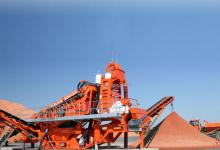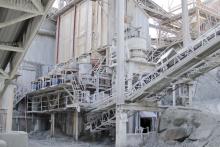Taiheiyo Cement Corporation of Japan is reported to have a new cementitious material with compressive strength of 464N/mm2, a world record, using normal pour and form techniques.
The material properties and manufacturing method associated with the newly-developed cementitious material are distinguished by two technological characteristics.
The material is designed so that multiple types of particles can be packed as closely together as possible based on the principles of micromeritics, the science and technology of small particles.
To achieve this design, Taiheiyo Cement used new material micro-particles that it says have not been used in the cement and concrete industry to date.
After the new cement is poured into forms using the normal method, the forms are removed after one or two days, and the material is subject to a water-absorbing process that lasts tens of minutes.
During this process, the stoichiometric amount of water that the material lacks in absolute terms, due to the extremely small amount of water with which it is mixed initially, is supplied from the surface to the internal portion of the material by means of a reaction between the water and the cement. That water then reacts actively with the cement during a two-stage heat-curing process to yield an extremely dense, hardened material.
Taiheyo Cement says that greater increases in compressive strength are possible by modifying the cement itself to further increase the powder’s filling ability.
Although there have been reports from overseas of the development of reactive powder concrete with compressive strength of 673N/mm2, those products require the use of fine ceramic forming at high temperature and pressure, says the company.








